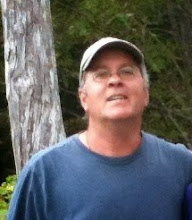Over the course of the past month I have been monitoring birds in and around two roadside hedgerows in Cook County. I was doing this for my most recent master's course, but going out and counting birds in your neighborhood is a pursuit that I would recommend to anyone. These ideas seem to start out simply enough, but before you know it counting birds in old hedgerows may lead to some interesting places.
As I was tracking down articles about such topics, I came across an article from over 100 years ago that intrigued me. In 1910, Isaac Hess wrote an article that appeared in The Auk, titled "One Hundred Breeding Birds of an Illinois Ten-Mile Radius." Hess was from the town of Philo,Illinois - in Champaign, County. Hess was a merchant by trade, but a naturalist at heart. In this article, Hess summarized some 12 years worth of remarkable field observations taken within the confined radius of his homestead.
For my purposes, I was initially seeking out local references about birds and hedgerows - but ultimately, I was captivated by this glimpse of a landscape from a century ago. I loved reading Hess' writing - a style that was clear and uncomplicated. His local landmarks were groves of trees and local watercourses - geographical thinking that is virtually extinct in this Age of Mapquest. I have to wonder what, if anything, remains of these wooded parcels that he'd named.
27. Antrostomus vodiferus. WHIP-POOR-WILL.- Common summer resident. Arrives April 25 to May 1. Found only in the upland woods after their arrival from the south. Here they stay but a few days, leaving for the low damp woods for nesting. I have succeeded in finding but one set of eggs. This was a set of two taken May 16, 1901. A great deal has been written about this bird's night notes and the number of times they are repeated. At midnight on a moon-light night in May, 1905, I counted 175 repetitions of "whip-poor-will" before a pause was taken.
No one writes (in scientific journals, certainly) about Whip-poor-wills calling in the moonlight any more. Hess wrote in a language of a different time that describes a bird that - one hundred years later - seems to be declining in numbers. Anyway, thanks, Mr. Hess, for committing to paper and ink years worth of field work that shows us modern folk what once was. If you were here today, you'd see that a great deal has changed. Nevertheless, some of us are still out there poking around the field margins, following in those large footsteps of yours.



No comments:
Post a Comment